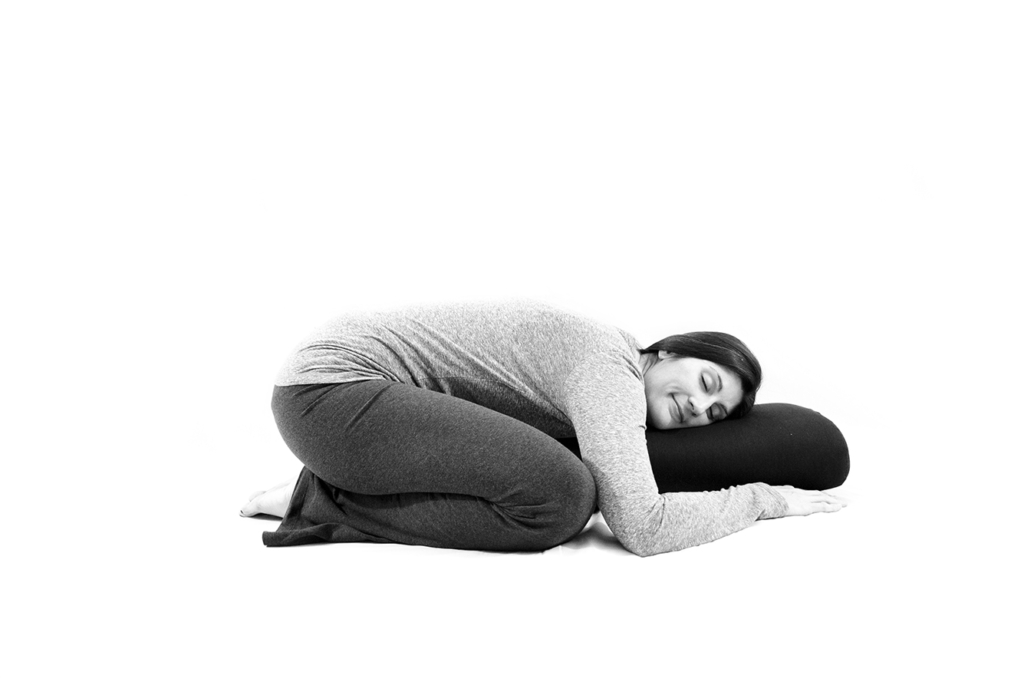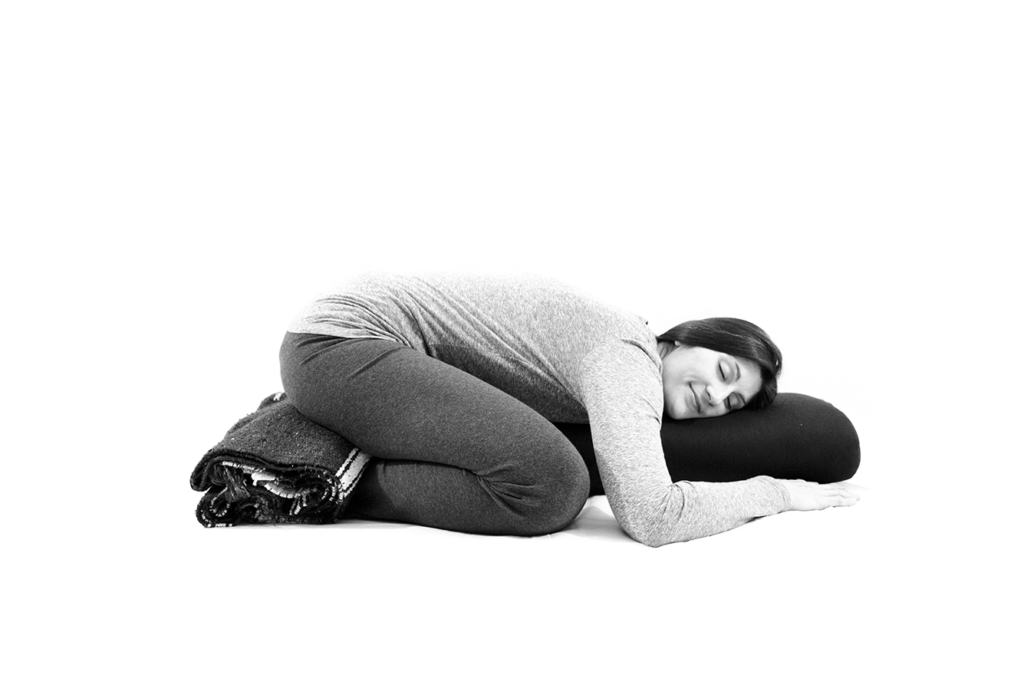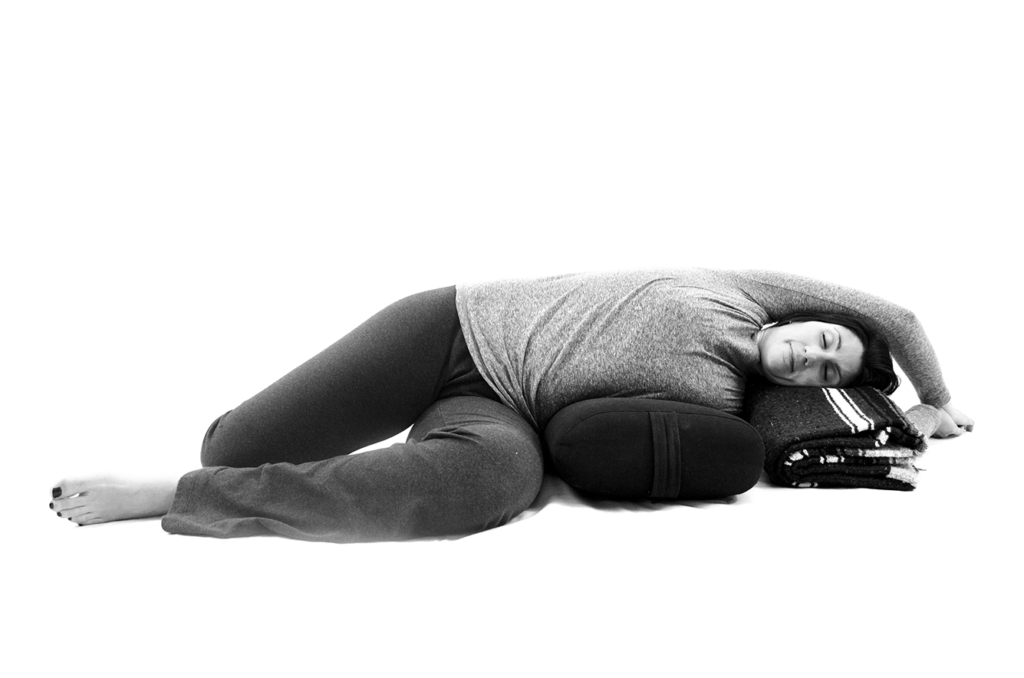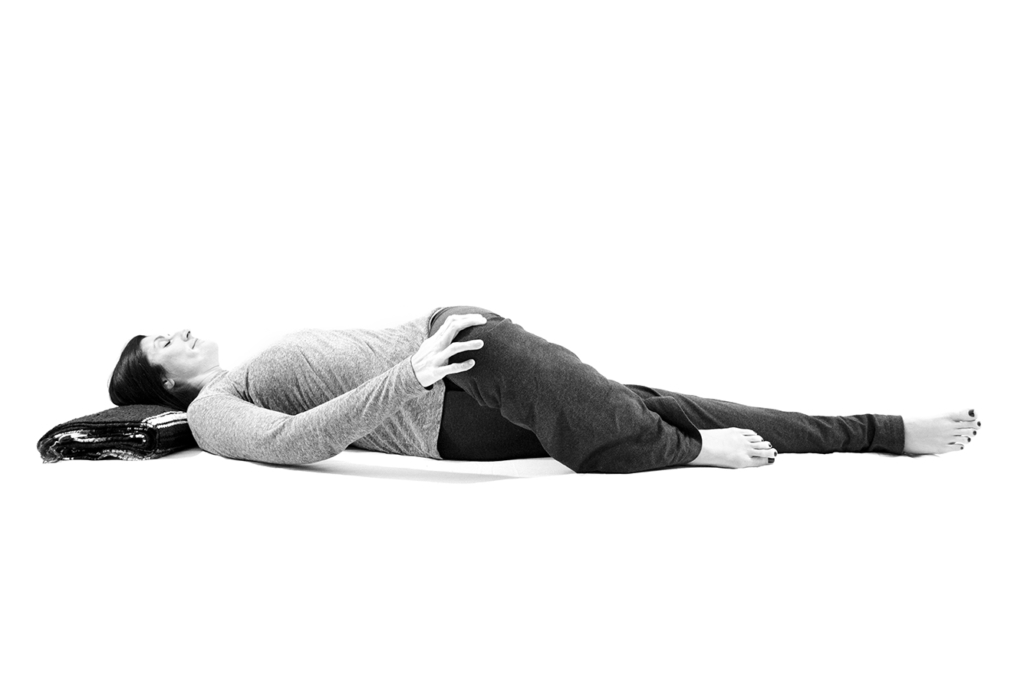Transform Your Pain Management Routine with These Therapeutic Yoga Techniques for Chronic Back and Hip Pain
Chronic back and hip pain can significantly disrupt daily life. But through consistent, gentle movement and diaphragmatic breathing, you invite relief to those aching areas. The yoga techniques for chronic back and hip pain, restorative yoga postures, gentle stretches, and mindful breathing exercise offered in this blog, are natural, low-impact solutions to manage pain, improve flexibility, and promote relaxation. Below, I’ve outlined five yoga techniques from my book, Yoga for Low Back and Hip Health, that specifically target chronic back pain and hip discomfort, helping you feel more at ease in your body.
1. Supported Reclining Pose
Supported Reclining Pose is a highly effective restorative yoga posture for holistic pain management for chronic low back and hip pain. This posture becomes a meditation for relaxation for those seeking gentle, therapeutic pain relief solutions. As it gently opens the chest and shoulders, this posture provides a supported stretch that counters the effects of slouching and prolonged sitting, which often exacerbates lower back discomfort. When practiced regularly, this pose not only improves posture, but also decompresses the spine and reduces pressure on the vertebrae, discs and hips, helping to ease stiffness and chronic pain.
How To Practice Supported Reclining Pose
- Place a bolster or block lengthwise under your upper back, with your hips and legs resting on the floor.
- Allow your arms to rest out to the sides, palms facing up.
- Relax in this position for 5-10 minutes, focusing on deep breathing to enhance the stretch.

Supported Reclining Pose. Photo credit: Yoga for Low Back and Hip Health by Cyndi Roberts
Benefits of Practicing Supported Reclining Pose
- Spinal decompression that relieves pressure on the lower back.
- Hip flexor release for improving hip alignment.
- Improved posture.
- Stress and tension relief which can reduce inflammation and chronic low back pain.
2. Supported Child’s Pose
One of the most comprehensive restorative poses to stretch the back and hips is Supported Child’s Pose. This gentle position allows you to fold forward while resting your torso on a bolster or cushion, creating length for the lower back and hips. The supported nature of this pose encourages deep relaxation, allowing the body to unwind and release accumulated tension. Practicing Supported Child’s Pose regularly can soothe tight muscles and promote a sense of calm, making it an essential technique for managing chronic pain. This pose creates space in your spine and releases tension, perfect for decompressing after long periods of sitting or standing.
How To Practice Supported Child’s Pose
- Begin by kneeling on the floor, with your bolster (or pillow) vertically on earth, with big toes touching, and knees spread apart.
- Lay the belly, torso and chest on the support with head turned to one side.
- Extending arms forward or rest them by your sides.
- Breathe deeply, allowing your lower back to release with each exhale, gradually easing the hips to the heels.
- Practice 1-3 minutes, then turn the head to face the other direction and practice another 1-3 minutes.
- Place a blanket behind the knees if you experience any knee pain.

Supported Child’s Pose. Photo credit: Yoga for Low Back and Hip Health by Cyndi Roberts

Supported Child’s Pose with knee support. Photo credit: Yoga for Low Back and Hip Health by Cyndi Roberts
Benefits of Supported Child’s Pose
- Stretches the hips, thighs, and ankles.
- Reduces tension in the spine, alleviates back pain and provides hip pain relief.
- Calms the mind, reducing stress-related muscle tightness.
3. Supported Half Moon
Restorative pose Supportive Half Moon gently stretches key muscles along the side body, including the obliques, quadratus lumborum, and hip flexors, which are often tight in people experiencing lower back pain. Stretching the hip flexors not only benefits the lower back but also helps restore proper hip alignment. As you relax and lengthen the spine in this pose, it naturally encourages better spinal alignment. Tightness in these areas often leads to chronic pain, sometimes caused by disc compression in the lower back. Additionally, this posture helps release tension in the muscles involved in breathing, promoting deeper, smoother breaths that activate the body’s relaxation response. However, be cautious if you have any rib injuries.
How to Practice Supported Half Moon
- Start by sitting on earth with a bolster, folded blanket or pillow next to your right hip.
- Use an exhale to lay down and drape the rib cage over the support.
- The legs can extend or stay bent.
- The arms can be straight or bent or the top arm can rest on the top hip.
- For a more restorative version, support the top arm with a blanket and put a blanket between the knees and ankles.
- Hold for 2-6 minutes, then switch sides.

Supported Half Moon pose. Photo credit: Yoga for Low Back and Hip Health by Cyndi Roberts

Supported Half Moon pose. Photo credit: Yoga for Low Back and Hip Health by Cyndi Roberts
Benefits of Reclined Half Crescent
- Improves spinal flexibility and spinal mobility.
- Promotes better posture.
- Relieve persistent low back pain and hip discomfort.
- Improves breath capacity for deeper breathing and relaxation.
4. Reclined Knee Down Twist
Reclined Knee Down Twist is highly beneficial for relieving chronic low back and hip pain as it gently stretches the spine, glutes, and hips, helping to release tension in these commonly tight areas. This restorative pose improves spinal mobility and increases circulation to the lower back, which can alleviate pain and stiffness caused by prolonged sitting or poor posture. By targeting the muscles along the lower spine and outer hips, this gentle yoga pose improves flexibility and circulation making it an essential practice for those suffering from chronic back pain or hip discomfort. This gentle movement also supports spinal alignment and decompresses the lower back, promoting overall pain relief, decreased inflammation and a sense of relaxation.
How to Practice Reclined Knee Down Twist
- Lie on your back holding one knee into the chest and the other leg on the earth.
- As you breathe out, draw the knee across the body and let the foot rest on the earth or yoga prop like a block or bolster
- Keep shoulders on the earth and extend arms out.
- Head can be centered or turned to one side
- Hold for 5-10 breaths before switching sides.

Reclined Knee Down Twist. Photo credit: Yoga for Low Back and Hip Health by Cyndi Roberts
Benefits of Reclined Knee Down Twist
- Releases tension in the spine and lower back.
- Stretches the hips, glutes, and obliques.
- Improves spinal flexibility, aiding in overall back health.
5. Diaphragmatic Breathing
One of the most essential aspects of managing chronic pain is learning to breathe effectively. Incorporating Diaphragmatic Breathing into your yoga routine can significantly impact your overall experience. This technique involves breathing deeply into your abdomen rather than shallowly into your chest. By focusing on your diaphragm, you engage your body’s relaxation response, reducing stress and promoting a sense of calm. Practicing diaphragmatic breathing while in restorative poses enhances the benefits, allowing for deeper stretches and more effective pain relief. Click here to access my guided how-to accessible on various platforms.
Incorporating these top five yoga techniques into your daily or weekly routine can transform your approach to chronic back and hip pain. By focusing on restorative and gentle postures, along with effective breathing techniques, you have a comprehensive pain management strategy that fosters relaxation, flexibility, and overall well-being. As with any new exercise routine, it’s essential to listen to your body and consult with a healthcare professional to ensure these techniques are suitable for your specific needs. With dedication and mindfulness, you can experience lasting relief and a renewed sense of mobility.
For more postures, practices, and online yoga sessions for low back and hip pain, please visit my blog and/or purchase your copy of Yoga For Low Back and Hip Health.


